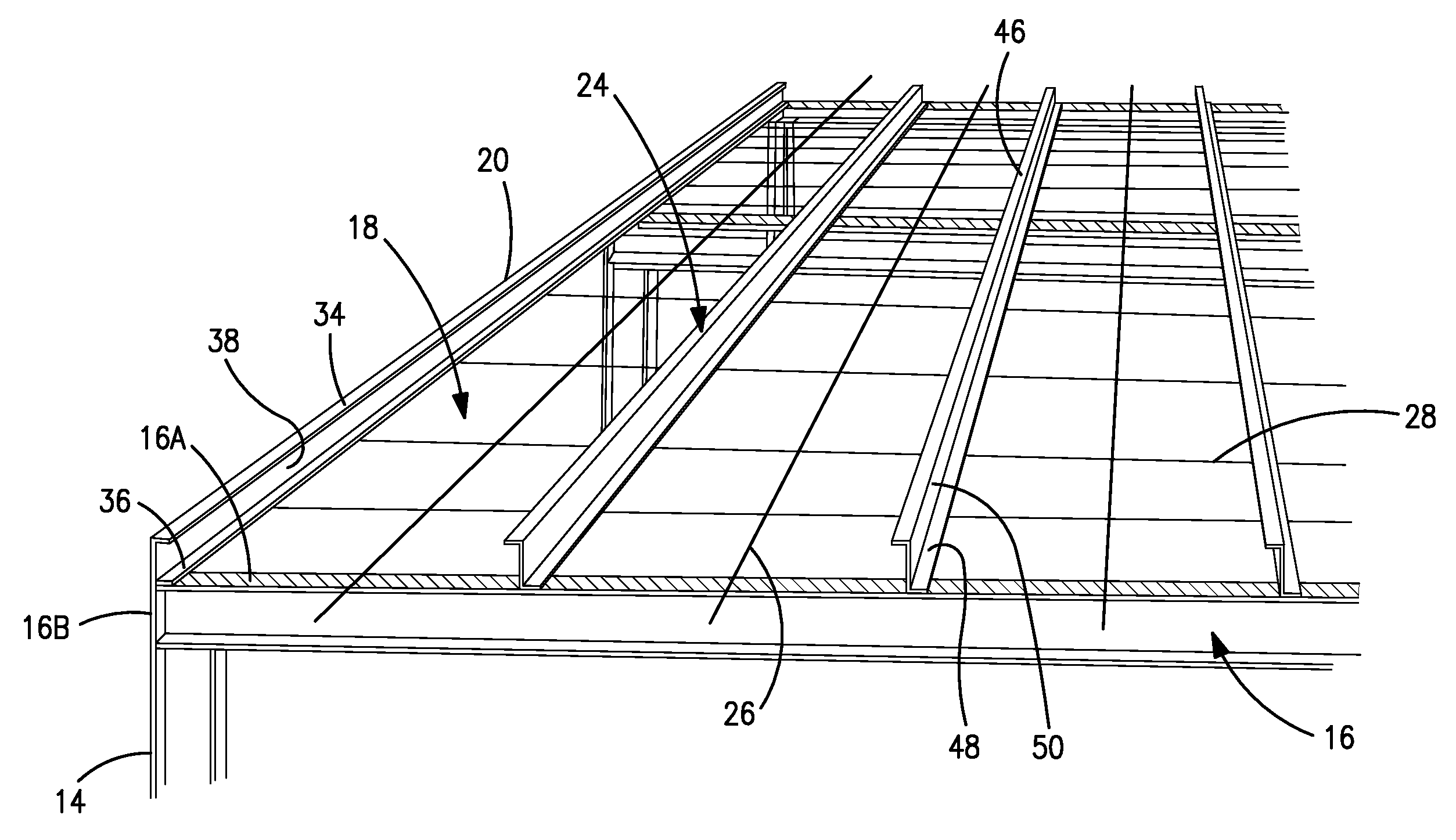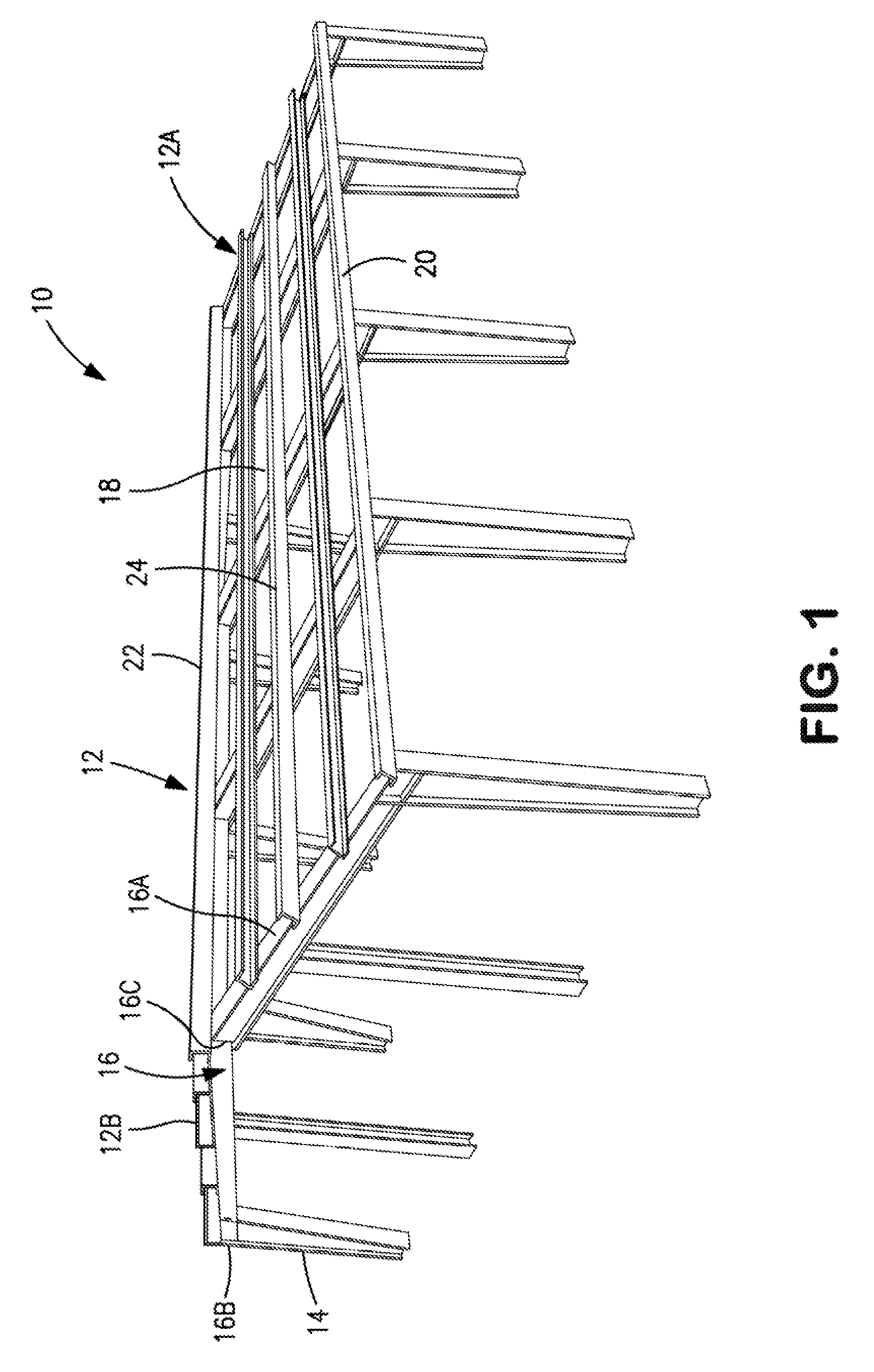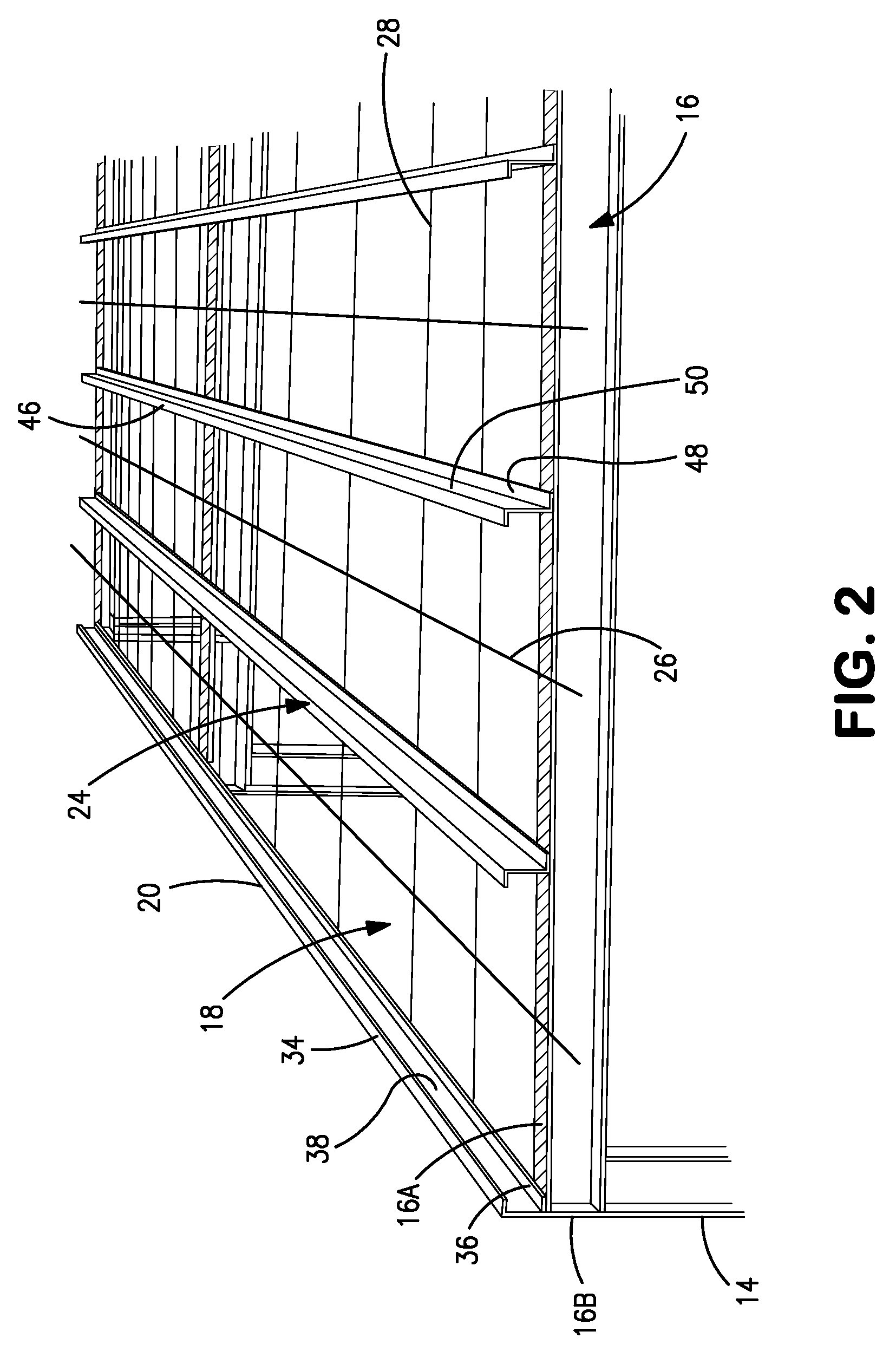Band hardness in fall protection system
a fall protection system and band technology, applied in the field of building components, building sub-assemblies, building assemblies, etc., can solve the problems of limiting the mobility of workers, limiting the range of movement of workers, and limiting the use of tie-off harnesses in the industry, so as to achieve enhanced fall protection system capacity, reduce the effect of permanent deformation and dissipation of the fraction of for
- Summary
- Abstract
- Description
- Claims
- Application Information
AI Technical Summary
Benefits of technology
Problems solved by technology
Method used
Image
Examples
Embodiment Construction
[0034]FIG. 1 illustrates the primary structural members of a typical metal building 10 having first and second roof slopes 12A and 12B. Vertical support for the structural elements of the roof, designated generally as 12, is provided by upstanding columns 14 positioned along side walls and end walls of the building. Rafters 16 overlie the tops of the columns and are supported by the columns. Rafters 16 span the width of the building, creating a series of open spaces between rafters 16, the open spaces being commonly referred to as “bays”18 in the construction arts, the bays representing distances between respective ones of the rafters. Each rafter has an upper surface 16A, and opposing first 16B and second 16C ends.
[0035]According to the embodiments illustrated in FIGS. 1-4, eaves 20, expressing “C”-shaped cross-sections, are positioned at the down-slope ends of the rafters 16. Lengths of the eaves extend along the length of the building, above the outer wall of the building. The ea...
PUM
 Login to View More
Login to View More Abstract
Description
Claims
Application Information
 Login to View More
Login to View More - R&D
- Intellectual Property
- Life Sciences
- Materials
- Tech Scout
- Unparalleled Data Quality
- Higher Quality Content
- 60% Fewer Hallucinations
Browse by: Latest US Patents, China's latest patents, Technical Efficacy Thesaurus, Application Domain, Technology Topic, Popular Technical Reports.
© 2025 PatSnap. All rights reserved.Legal|Privacy policy|Modern Slavery Act Transparency Statement|Sitemap|About US| Contact US: help@patsnap.com



